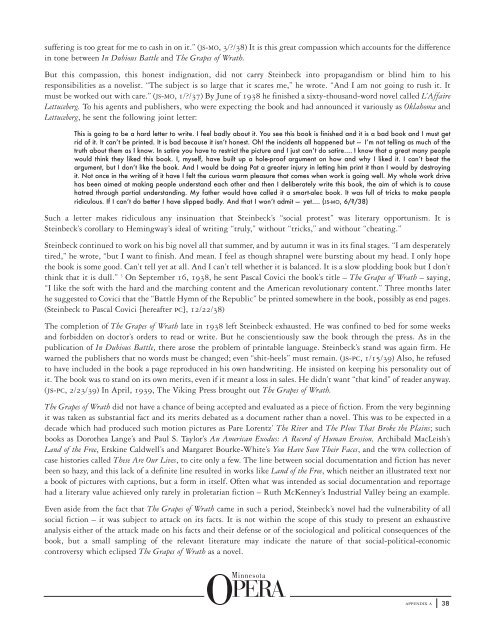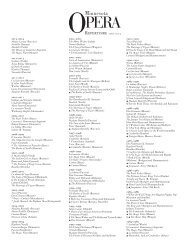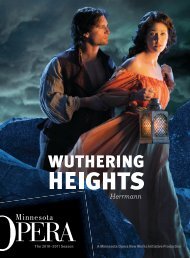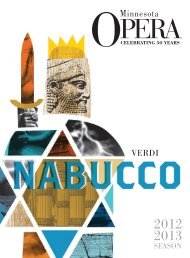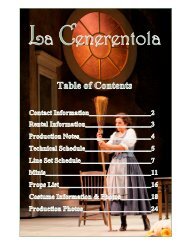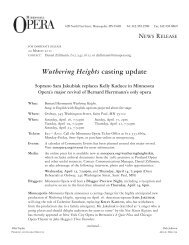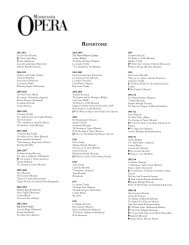Create successful ePaper yourself
Turn your PDF publications into a flip-book with our unique Google optimized e-Paper software.
suffering is too great for me to cash in on it.” (JS-MO, 3/?/38) It is this great compassion which accounts for the difference<br />
in tone between In Dubious Battle and The <strong>Grapes</strong> of Wrath.<br />
But this compassion, this honest indignation, did not carry Steinbeck into propagandism or blind him to his<br />
responsibilities as a novelist. “The subject is so large that it scares me,” he wrote. “And I am not going to rush it. It<br />
must be worked out with care.” (JS-MO, 1/?/37) By June of 1938 he finished a sixty-thousand-word novel called L’Affaire<br />
Lettuceberg. To his agents and publishers, who were expecting the book and had announced it variously as Oklahoma and<br />
Lettuceberg, he sent the following joint letter:<br />
This is going to be a hard letter to write. I feel badly about it. You see this book is finished and it is a bad book and I must get<br />
rid of it. It can’t be printed. It is bad because it isn’t honest. Oh! the incidents all happened but — I’m not telling as much of the<br />
truth about them as I know. In satire you have to restrict the picture and I just can’t do satire.… I know that a great many people<br />
would think they liked this book. I, myself, have built up a hole-proof argument on how and why I liked it. I can’t beat the<br />
argument, but I don’t like the book. And I would be doing Pat a greater injury in letting him print it than I would by destroying<br />
it. Not once in the writing of it have I felt the curious warm pleasure that comes when work is going well. My whole work drive<br />
has been aimed at making people understand each other and then I deliberately write this book, the aim of which is to cause<br />
hatred through partial understanding. My father would have called it a smart-alec book. It was full of tricks to make people<br />
ridiculous. If I can’t do better I have slipped badly. And that I won’t admit — yet.… (JS-MO, 6/?/38)<br />
Such a letter makes ridiculous any insinuation that Steinbeck’s “social protest” was literary opportunism. It is<br />
Steinbeck’s corollary to Hemingway’s ideal of writing “truly,” without “tricks,” and without “cheating.”<br />
Steinbeck continued to work on his big novel all that summer, and by autumn it was in its final stages. “I am desperately<br />
tired,” he wrote, “but I want to finish. And mean. I feel as though shrapnel were bursting about my head. I only hope<br />
the book is some good. Can’t tell yet at all. And I can’t tell whether it is balanced. It is a slow plodding book but I don’t<br />
think that it is dull.” 5 On September 16, 1938, he sent Pascal Covici the book’s title – The <strong>Grapes</strong> of Wrath – saying,<br />
“I like the soft with the hard and the marching content and the American revolutionary content.” Three months later<br />
he suggested to Covici that the “Battle Hymn of the Republic” be printed somewhere in the book, possibly as end pages.<br />
(Steinbeck to Pascal Covici [hereafter pc], 12/22/38)<br />
The completion of The <strong>Grapes</strong> of Wrath late in 1938 left Steinbeck exhausted. He was confined to bed for some weeks<br />
and forbidden on doctor’s orders to read or write. But he conscientiously saw the book through the press. As in the<br />
publication of In Dubious Battle, there arose the problem of printable language. Steinbeck’s stand was again firm. He<br />
warned the publishers that no words must be changed; even “shit-heels” must remain. (js-pc, 1/15/39) Also, he refused<br />
to have included in the book a page reproduced in his own handwriting. He insisted on keeping his personality out of<br />
it. The book was to stand on its own merits, even if it meant a loss in sales. He didn’t want “that kind” of reader anyway.<br />
(js-pc, 2/23/39) In April, 1939, The Viking Press brought out The <strong>Grapes</strong> of Wrath.<br />
The <strong>Grapes</strong> of Wrath did not have a chance of being accepted and evaluated as a piece of fiction. From the very beginning<br />
it was taken as substantial fact and its merits debated as a document rather than a novel. This was to be expected in a<br />
decade which had produced such motion pictures as Pare Lorentz’ The River and The Plow That Broke the Plains; such<br />
books as Dorothea Lange’s and Paul S. Taylor’s An American Exodus: A Record of Human Erosion, Archibald MacLeish’s<br />
Land of the Free, Erskine Caldwell’s and Margaret Bourke-White’s You Have Seen Their Faces, and the WPA collection of<br />
case histories called These Are Our Lives, to cite only a few. The line between social documentation and fiction has never<br />
been so hazy, and this lack of a definite line resulted in works like Land of the Free, which neither an illustrated text nor<br />
a book of pictures with captions, but a form in itself. Often what was intended as social documentation and reportage<br />
had a literary value achieved only rarely in proletarian fiction – Ruth McKenney’s Industrial Valley being an example.<br />
Even aside from the fact that The <strong>Grapes</strong> of Wrath came in such a period, Steinbeck’s novel had the vulnerability of all<br />
social fiction – it was subject to attack on its facts. It is not within the scope of this study to present an exhaustive<br />
analysis either of the attack made on his facts and their defense or of the sociological and political consequences of the<br />
book, but a small sampling of the relevant literature may indicate the nature of that social-political-economic<br />
controversy which eclipsed The <strong>Grapes</strong> of Wrath as a novel.<br />
appendix a<br />
38


